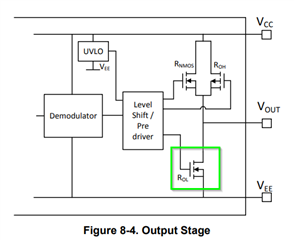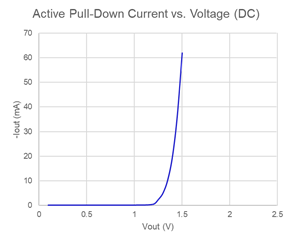Other Parts Discussed in Thread: UCC21551,
Tool/software:
Hi team,
please kindly help to check the current capacity for output stage NMOS body diode, My customer want to know that.

Beside, there is a ESD structure for the output pin, if there is a positive voltage on VEE-VOUT, Will the ESD take over the current first? And the VOUT pin spec, min value is VEE-0.3V, if it is violated? The ESD diode will have the risk to broke?

BR
Emma


